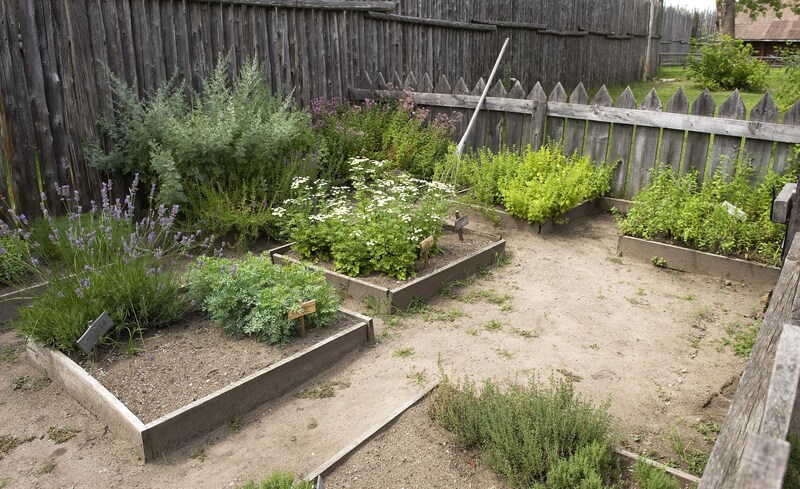From Bare to Beautiful: Starter Secrets for an Enviable Lawn
Dreaming of a lush, emerald-green expanse instead of a patchy, bare yard? You're not alone! Growing a spectacular lawn from scratch can seem overwhelming, but with the right knowledge, you can transform your outdoor space from plain to picture-perfect. This comprehensive guide shares starter secrets, proven tips, and essential strategies for cultivating a truly enviable lawn. Whether you're working with a small urban patch or a vast suburban lot, you'll discover exactly how to create that healthy, head-turning greenery you've always wanted.
Understanding the Basics: What Makes a Lawn Thrive?
Before diving into the nitty-gritty of lawn care for beginners, it's essential to understand what helps grass thrive. Different lawns require different approaches, but some universal principles apply:
- Healthy soil is the foundation for an enviable lawn.
- Proper sunlight ensures photosynthesis and growth.
- Consistent water supports root development.
- Regular maintenance prevents problems before they start.
Let's break down these starter secrets to ensure your lawn is the talk of the neighborhood.

Step 1: Test and Prepare Your Soil
Why Soil Health Is Non-Negotiable
Your grass will only be as healthy as the soil beneath it. From clay-heavy to sandy or loamy, each soil type comes with unique strengths and weaknesses for supporting turf. Avoid the common mistake of skipping soil prep--this is where many new lawns fail.
Secret #1: Start With a Soil Test
- Purchase an affordable soil test kit from your local garden center.
- Follow instructions to collect and test sample soil from various spots in your yard.
- Look for readings on pH, nutrient levels (nitrogen, phosphorous, potassium), and organic matter.
Why does this matter?
Grass thrives in soil with a neutral-to-slightly-acidic pH (6.0-7.0). If your pH is off, it's much harder for your enviable turf to absorb vital nutrients, resulting in bare patches or poor color. Amend soil as needed: lime increases pH, while sulfur lowers it.
Secret #2: Amend the Soil as Needed
- Work in compost or aged manure to improve structure and fertility.
- Add sand to heavy clay for better drainage, or incorporate organic material into sandy soils for moisture retention.
- Remove rocks, roots, and debris to ensure even growth and mowing down the road.
Step 2: Choose the Right Grass for Your Region
Matching Grass Type to Your Climate
All grass seeds are not created equal. For the best results, select a variety proven to flourish in your geographic zone:
- Cool-season grasses (like Kentucky bluegrass, perennial ryegrass, or fescues) thrive in northern regions with cold winters and moderate summers.
- Warm-season grasses (such as Bermuda, zoysia, or St. Augustine) excel in southern climates with hot summers and mild winters.
Not sure which variety is best for your "bare to beautiful" transformation? Check the USDA Plant Hardiness Zone Map or ask your local extension office--they have region-specific advice for starter lawns.
Step 3: Timing Is Everything - Plant at the Right Season
Sowing grass seed at the optimal time is a major starter secret for achieving a full, green carpet and avoiding thin, straggly results. Here's what you need to know:
- Cool-season grasses: Seed in early fall or early spring, when temperatures range from 60-75?F (15-24?C).
- Warm-season grasses: Plant in late spring to early summer, after all danger of frost is past and daytime highs are 80+?F (27+?C).
Avoid seeding during temperature extremes: Too hot or too cold, and your seed may fail to sprout or die off quickly.
Step 4: Planting Techniques for a Gorgeous Lawn
Secret #3: Don't Skimp on Preparation
- Till the soil to a depth of 3-4 inches so roots can easily spread out.
- Level the soil surface with a rake, paying close attention to low spots where water could pool.
- Use a lawn roller to gently compact the soil--this helps seeds stay in place and keeps the lawn even.
Secret #4: Spread Seed Evenly
Uniform coverage is the key to avoiding bare spots. For small areas, scatter seeds by hand; for larger lawns, rent or borrow a broadcast spreader for even distribution. Aim for a seeding rate based on the grass type (check the package for recommendations).
Secret #5: Protect and Nurture Fresh Seedlings
- Lightly rake the seeded area so the seeds settle at or just below the soil surface.
- Mulch lightly with straw (not hay, which contains weed seeds) to help retain moisture and prevent washout from rain or wind.
- Keep off the lawn as much as possible during germination--foot traffic can crush fragile young grass!
Step 5: Mastering Watering, Fertilization, and Mowing
Secret #6: Water Wisely for Deep Roots
Consistent moisture is absolutely essential for newly seeded lawns. Water lightly once or twice daily until seedlings emerge (usually 7-21 days, depending on type and temperature). After establishment, transition to deep, infrequent soaks to encourage deep roots and drought tolerance.
Secret #7: Start a Regular Feeding Plan
- Apply a starter fertilizer rich in phosphorous at planting time for strong root growth.
- After three mowings, feed your new lawn with a balanced, slow-release fertilizer.
- Avoid over-fertilizing, especially in hot summer months (it can damage the grass).
Tip: Using organic lawn fertilizers can help feed your soil as well as your grass, promoting long-term health and resilience.
Secret #8: Mow Early and Often (But Correctly!)
- Wait until your new turf reaches about 3 inches tall before its first cut.
- Never remove more than one-third of the grass height at once--this prevents shock and yellowing.
- Keep blades sharp to avoid tearing delicate grass.
Mowing encourages denser growth and helps your lawn block out weed competition for that pristine, beautiful look.
Step 6: Weed and Pest Control
Secret #9: Get Ahead of Weed Problems
- Choose top-quality seed blends labeled "weed-free."
- Maintain thick, healthy turf--this naturally crowds out upstart weeds.
- Hand-pull emerging weeds in the first few months; wait until at least the third mowing before using herbicides.
Secret #10: Watch for Pests and Disease
- Monitor for signs like brown patches, stunted growth, or visible bugs.
- Practice good lawn hygiene: Remove debris and clippings that could harbor insects or fungus.
- Contact your local cooperative extension if you suspect an infestation--they offer region-specific advice for treatment.
Step 7: Ongoing Maintenance - The Secret to an Enviable Lawn
Secret #11: Aeration and Overseeding
Lawns become compacted over time, especially in high-traffic areas. Aeration (removing small plugs of soil) allows air, water, and nutrients to reach grassroots.
Each fall, overseed bare patches to keep your grass thick and vibrant.
Secret #12: Mulch Mow for a Healthy Ecosystem
Instead of bagging all grass clippings, try "mulch mowing." Modern mowers finely chop clippings, returning valuable organic matter to your soil and creating a natural, self-sustaining system.
Secret #13: Adjust for the Season
- In spring, remove debris, watch for winter weeds, and fertilize to kickstart growth.
- In summer, mow higher and water deeply to resist drought.
- In fall, overseed bare spots, aerate, and apply root-strengthening fertilizer for winter.
- In winter, keep off frozen grass and avoid chemical applications.
Common Lawn Mistakes to Avoid
- Watering too often or too little - Both are harmful. The deep-soak method saves water and builds stronger roots.
- Ignoring pH or skipping soil prep - Don't plant "blind"--prep pays dividends in years of beauty.
- Mowing too short - Scalp the grass and you encourage weeds and stress.
- Over-fertilizing - More is not better; you can burn your lawn and pollute nearby waterways.
- Forgetting about local climate and timing - Always match grass type and seeding schedule to your unique environment.

Frequently Asked Questions about Growing a Beautiful Lawn
How long does it take for a new lawn to establish?
Expect visible grass seedlings within 1-3 weeks, but it can take 1-2 growing seasons for a thick, resilient carpet to fully develop. Patience and consistent care are key!
How can I fix bare patches in my lawn quickly?
Scratch up the soil, mix in some compost, and reseed the spot. Water often and use a light mulch to help germination. Consider using a lawn repair kit for convenience.
Is sod better than seeding a lawn?
Sod delivers "instant green," but is more expensive and requires careful installation. Seeding is affordable and offers more variety, but takes longer. Both can result in a "truly enviable lawn" if cared for properly!
How often should I fertilize my lawn?
Most lawns benefit from two to four feedings a year (spring, summer, early fall, and late fall for cool-season types). Adjust based on soil test results and grass type.
Are organic methods effective for lawn care?
Yes! Organic fertilizers, compost, and natural weed prevention build soil health and resilience. You may see slower results, but enjoy long-term benefits for your lawn and the environment.
Conclusion: From Bare Lawn to Backyard Envy
Transforming your yard from bare to beautiful is entirely achievable for any homeowner willing to learn, prepare, and commit to regular care. By starting with healthy, well-prepared soil, choosing region-appropriate grass seed, planting at the right time, and guarding your turf with proper watering and maintenance, you'll create a lush, healthy lawn that turns heads and feels wonderful underfoot.
Follow these starter secrets, and you'll go from envy to inspiration--in your neighborhood and beyond.
- Test and improve your soil before planting any grass.
- Match grass seed to your climate for best results.
- Time sowing for maximum germination and growth.
- Care for seedlings with even watering, feeding, and gentle mowing.
- Stay ahead of weeds, pests, and problems with thick turf and proper hygiene.
- Maintain your lawn all year for continuous beauty and resilience.
Now you know the secrets to an enviable lawn from bare to beautiful--start your transformation today, and enjoy the outdoors like never before!